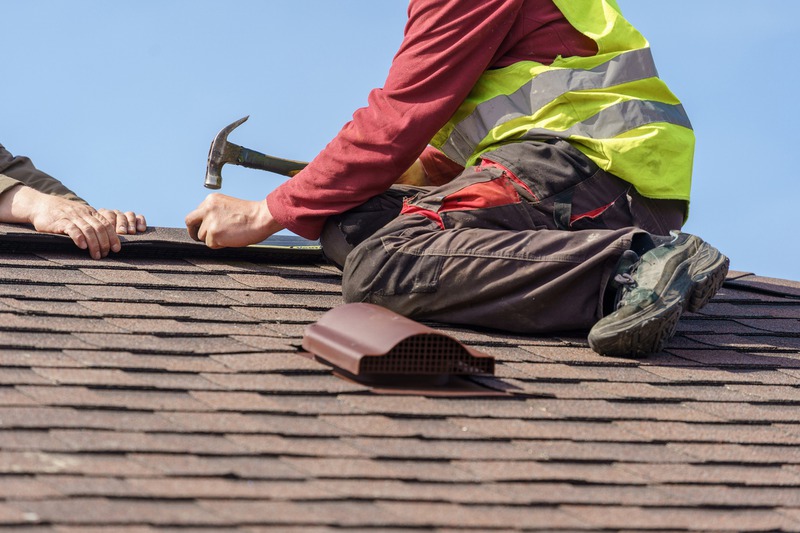Maintaining your roof and gutters is crucial for ensuring that your home remains in good condition. A well-maintained roof protects your home from the elements, while gutters direct water away from your house, preventing water damage. In this article, we’ll discuss what you should include in a maintenance checklist for your roof and gutters. Let’s explore how you can keep your home safe and sound with regular maintenance.
Regular Inspections Are Key
Regular inspections are necessary to keep your roof and gutters in good shape. By doing this, you can catch problems early before they become more significant, costly issues. Aim to inspect your roof and gutters at least twice a year, preferably in spring and fall and after major storms.
How to Conduct a Roof Inspection
Check for missing or damaged shingles, which could lead to leaks.
Look for signs of water damage or leaks inside the house, such as stains on ceilings or walls.
Examine the flashing around chimneys, vents, and skylights for any gaps or deterioration.
Inspect for moss or algae growth, as this can damage your roofing material over time.
Gutter Inspection Tips
Ensure that gutters are securely attached to the house.
Check for blockages from leaves, twigs, or other debris.
Look for signs of sagging or bending that may affect water flow.
Examine downspouts for clogs and ensure they direct water away from your home’s foundation.
Cleaning Your Gutters
One of the essential tasks in your maintenance routine is cleaning your gutters. It’s not the most glamorous job, but it’s incredibly important for preventing water damage and keeping your drainage system functioning properly.
Steps for Cleaning Gutters
Start by clearing large debris by hand or with a scoop.
Rinse the gutters with a hose, starting at the end opposite the downspout.
Flush out the downspouts to ensure they’re free of clogs.
Consider installing gutter guards to minimize debris buildup.
Regular gutter cleaning can prevent issues like water overflow, which can lead to foundation problems and damage to your landscaping.
Repairing Damaged Shingles
If you notice damaged or missing shingles during your inspection, it’s important to repair them promptly. This task may require the help of a professional, especially for larger repairs or if you’re uncomfortable working on the roof.
When to Call a Professional
If you’re unsure about tackling shingle repairs on your own, consider hiring a professional roofing company. They have the expertise to safely repair or replace damaged shingles, ensuring your roof remains watertight and structurally sound.
Maintaining Roof Flashing
Flashing is the material that covers joints in a roof, preventing water from seeping in. During your roof inspection, it’s crucial to check flashing for wear and tear.
Checking and Replacing Flashing
Inspect areas around chimneys, skylights, and vents for damaged flashing.
Seal any small holes with roofing cement or caulk.
If the flashing is severely damaged, replacement may be necessary.
Since flashing is a critical component of your roof system, ensuring its integrity is essential to prevent leaks.
Addressing Moss and Algae
Moss and algae can not only make your roof look unattractive but also damage your roofing materials over time. It’s important to tackle any growth before it leads to bigger issues.
Removing Growth
Use a mixture of water and bleach to clean affected areas gently.
Apply moss and algae inhibitors to prevent regrowth.
Consider trimming back tree branches to reduce shade and moisture on the roof.
Keeping your roof clear of moss and algae will prolong its life and improve its appearance.
Ensure Proper Ventilation
Proper ventilation in your attic and roof space is vital for preventing moisture buildup and reducing the risk of mold and rot. It also helps regulate temperatures, increasing your home’s energy efficiency.
Ways to Improve Ventilation
Ensure attic vents are unobstructed and functioning correctly.
Check for signs of mold or moisture in the attic.
Consider installing additional vents if necessary.
Maintaining good ventilation protects both your roof and the overall structure of your home.
Consider Professional Help When Needed
While some maintenance tasks can be handled on your own, others might require professional assistance. When in doubt, it’s always best to seek advice from experts.
For instance, roof installers Urbanax are experienced professionals who can effectively address complex roof issues, ensuring the longevity of your roof.
Routine Replacement of Roof Parts
Over time, even well-maintained roofs and gutters may need parts replaced to maintain effectiveness. Knowing when to replace parts can save time and money in the long run.
What to Replace and When
Shingles typically need replacing every 20-30 years, depending on the material.
Gutter systems may require replacement if they show signs of rust or persistent leaks.
Flashing may need replacement if damaged or corroded.
DIY enthusiasts often tackle minor repairs, but for larger jobs, consider companies that offer excellent roof replacement services to ensure quality and durable installations.
Final Thoughts
Regular maintenance of your roof and gutters is essential for protecting your home from water damage and costly repairs. By following this checklist, you can address small problems before they become big ones, ensuring that your home remains safe, efficient, and comfortable. Remember, when in doubt, don’t hesitate to call in the professionals to assist with inspections, repairs, or replacements. By staying proactive, you’re investing in the long-term health and value of your home.

